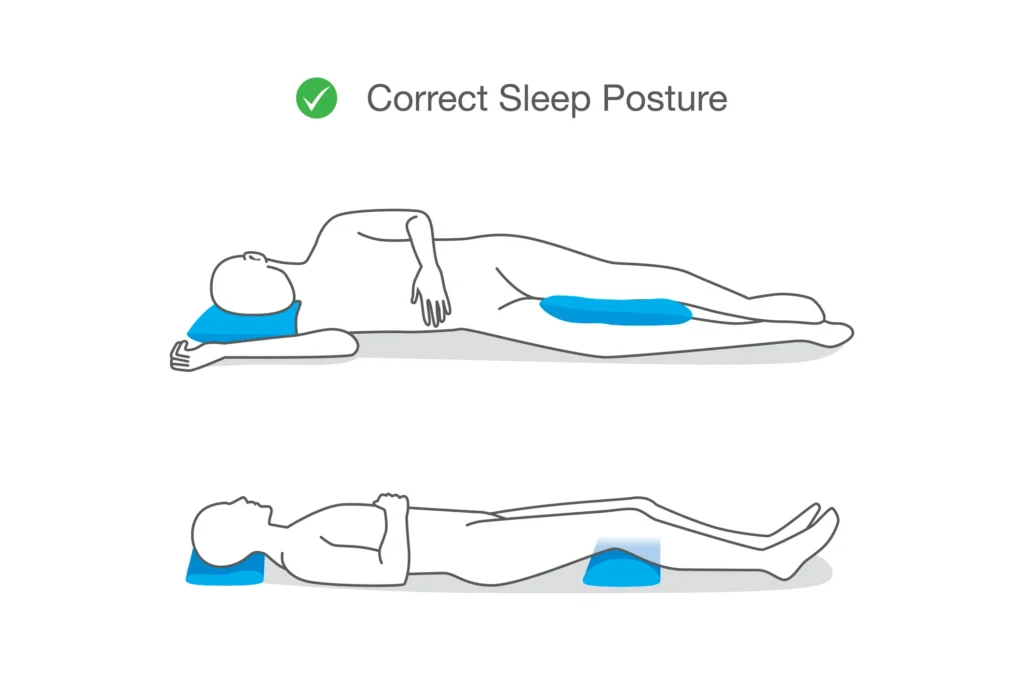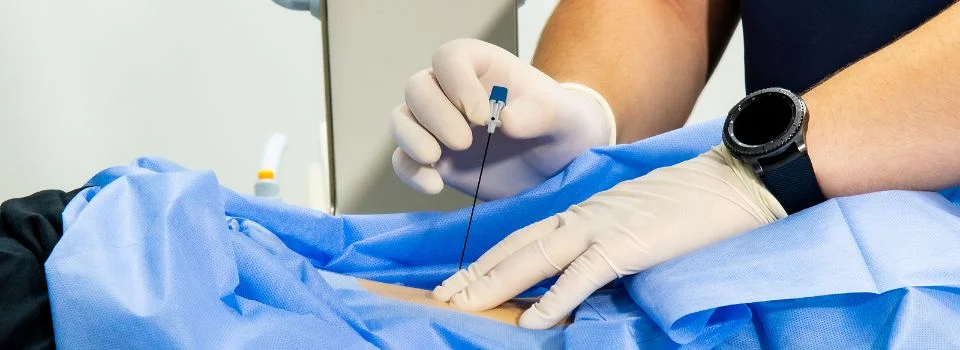Sacroiliac (SI) joint pain can be a frustrating and debilitating condition that affects your lower back, hips, and legs. For many people in Arizona, sacroiliac joint pain interferes with daily activities, making it difficult to sit, sleep, or move comfortably. At Red Butte Pain Solutions, we specialize in treating sacroiliac joint pain and helping our patients find lasting relief.
Today, we’ll explore the causes of sacroiliac joint pain, offer tips for sitting and sleeping comfortably, suggest exercises to alleviate pain, and explain how sacroiliac joint injections can provide relief.

What is Sacroiliac Joint Pain?
The sacroiliac joint is located at the base of the spine, connecting the sacrum (the triangular bone at the bottom of the spine) to the ilium (the upper part of the pelvis). This joint supports the weight of the upper body and transfers it to the lower body. Think of it like a keystone in an arch. When the sacroiliac joint becomes irritated or inflamed, it can lead to pain in the lower back, buttocks, and even down the legs.
Causes of Sacroiliac Joint Pain
There are several common causes of sacroiliac joint pain:
- Injury or Trauma
A sudden injury, such as a fall, car accident, or sports injury, can damage the sacroiliac joint. This can lead to inflammation, pain, and reduced mobility in the area. - Pregnancy
During pregnancy, the ligaments around the sacroiliac joint loosen to prepare for childbirth. This increased flexibility can lead to instability in the joint, causing pain. - Arthritis
Degenerative conditions like osteoarthritis can affect the sacroiliac joint. As the cartilage in the joint wears down, the bones can rub together, causing pain and inflammation. - Misalignment
Improper posture or uneven weight distribution can cause the sacroiliac joint to become misaligned. This can result in pain over time, especially when walking or standing for long periods. - Infection
Though rare, an infection in the sacroiliac joint can cause severe pain. This is a medical emergency and requires immediate treatment.

How to Sit Comfortably with Sacroiliac Joint Pain
Sitting can often aggravate sacroiliac joint pain, but adopting the right posture and using supportive cushions can help relieve discomfort. Here are some tips:
- Use a Supportive Chair
When sitting, choose a chair that provides firm back support. Avoid soft, cushioned chairs that cause your lower back to sink. A firm seat helps keep the spine aligned. - Use a Cushion
A lumbar support cushion or a specialized SI joint cushion can help reduce pressure on the sacroiliac joint. These cushions promote proper posture by supporting the natural curve of your spine. - Keep Feet Flat on the Floor
Make sure your feet are flat on the ground when sitting, with your knees at a 90-degree angle. This ensures proper weight distribution and reduces strain on your lower back. - Avoid Prolonged Sitting
Sitting for long periods can worsen sacroiliac joint pain. Try to get up and move around every 30 minutes to avoid stiffness and pain.

Sleeping comfortably with sacroiliac joint pain can be challenging. The position in which you sleep can either relieve or aggravate pain.
Here are a few suggestions to improve sleep:
- Sleep on Your Side with a Pillow Between Your Knees
Sleeping on your side can help reduce pressure on the sacroiliac joint. Place a firm pillow between your knees to keep your spine aligned and reduce strain on the lower back. - Sleep on Your Back with a Pillow Under Your Knees
If you prefer sleeping on your back, place a pillow under your knees. This will relieve tension in your lower back by tilting your pelvis and maintaining the natural curve of your spine. - Avoid Sleeping on Your Stomach
Sleeping on your stomach can cause your lower back to arch, which increases pressure on the sacroiliac joint. If possible, avoid this position to prevent worsening pain.
Exercise is an important part of managing sacroiliac joint pain.
Strengthening the muscles around the SI joint can help stabilize it and reduce pain. Always consult a healthcare professional before starting any exercise routine. Here are a few exercises to try:

- Bridge Pose
- Lie on your back with your knees bent and feet flat on the floor.
- Tighten your core and lift your hips toward the ceiling, forming a straight line from your shoulders to your knees.
- Hold for 5-10 seconds, then slowly lower your hips back down.
- Repeat 10-15 times. This exercise strengthens the glutes, hamstrings, and lower back muscles.

- Pelvic Tilts
- Lie on your back with your knees bent and feet flat on the floor.
- Tighten your core and gently tilt your pelvis upward, pressing your lower back into the floor.
- Hold for 5 seconds, then relax.
- Repeat 10-15 times. Pelvic tilts help strengthen the core and support the sacroiliac joint.

- Cat-Cow Stretch
- Start on your hands and knees with your wrists directly under your shoulders and your knees under your hips.
- Inhale as you arch your back, lifting your head and tailbone toward the ceiling (Cow pose).
- Exhale as you round your back, tucking your chin and tailbone (Cat pose).
- Repeat this motion for 30 seconds to a minute. This stretch helps improve flexibility in the spine and relieve tension in the lower back.
- Hip Flexor Stretch
- Stand with one foot in front of the other in a lunge position.
- Gently lower your back knee to the floor, keeping your front knee bent at a 90-degree angle.
- Hold this stretch for 20-30 seconds, then switch sides. Stretching the hip flexors can help relieve tension in the pelvis and lower back.

For patients with persistent sacroiliac joint pain, sacroiliac joint injections can provide significant relief.
At Red Butte Pain Solutions, we specialize in this treatment option. Here’s how it works:
- What is a Sacroiliac Joint Injection?
A sacroiliac joint injection is a minimally invasive procedure that delivers a combination of a corticosteroid and an anesthetic directly into the joint. This reduces inflammation and blocks pain signals from the affected area. - Who is a Candidate for Sacroiliac Joint Injections?
Patients who have not found relief through physical therapy, medications, or lifestyle modifications may benefit from sacroiliac joint injections. The injections are often used to confirm that the SI joint is the source of the pain. - What to Expect During the Procedure
The injection is performed under fluoroscopy (X-ray guidance) to ensure precise placement of the needle. Most patients experience significant pain relief within a few days of the procedure. - Benefits of Sacroiliac Joint Injections
Sacroiliac joint injections can provide long-lasting relief, reduce inflammation, and improve mobility.
At Red Butte Pain Solutions, we understand how challenging sacroiliac joint pain can be. Our goal is to help you find lasting relief through personalized treatment plans, which may include sacroiliac joint injections, exercise, and lifestyle modifications. If you’re suffering from sacroiliac joint pain in Arizona, don’t hesitate to reach out for an appointment. Together, we can work toward relieving your pain and improving your quality of life.
